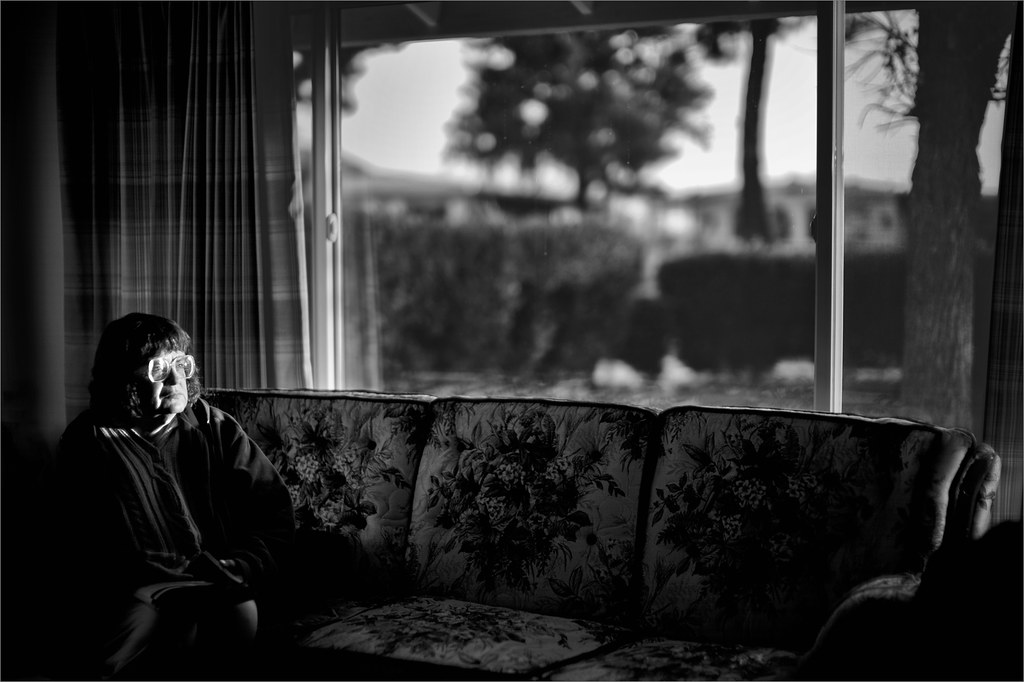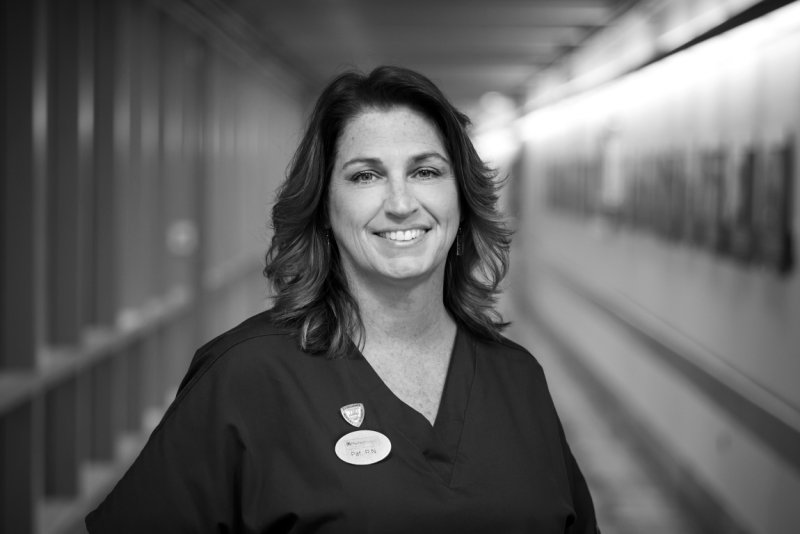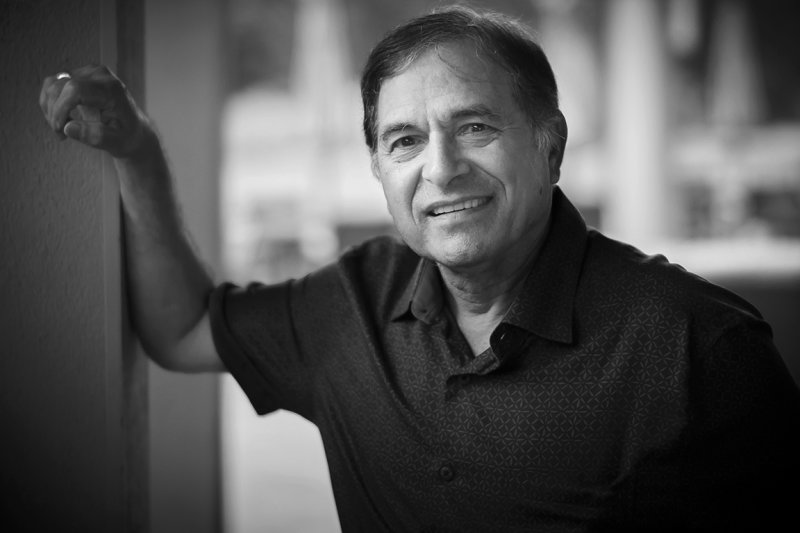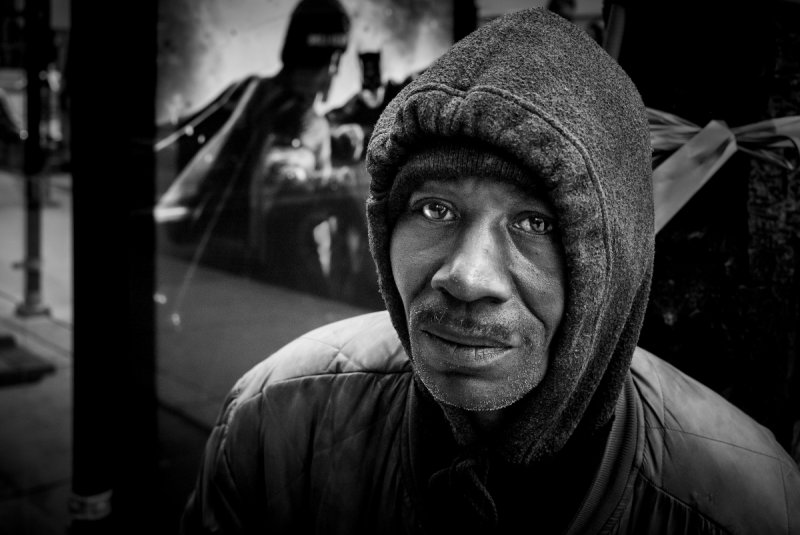John Bragg
Well-known
We all strive to make the best photos we can and for many it is a hit and miss affair. It occured to me last night, that what often makes or breaks a photo, espescially portraits, is how the light falls on the subject and the quality of that light. Leave studio and speedlights out of the equation and what defines a truely great shot, as opposed to a merely ok one, is the light. How did you learn to see the light and how would you advise a new photographer to take a portrait using for instance window light ?
charjohncarter
Mentor
I really don't like heavy artificial light being used on portraits, simple window light with a reflector if you need it on the opposite side is enough for me. Or just straight on natural light.
This weekend I took a portrait of my neighbor's son and his cousin. I asked her if she wanted me to go Hollywood on the editing. Of course she wanted it. I used a single flash:
 Pentax K1 RAW-Therapee by John Carter, on Flickr
Pentax K1 RAW-Therapee by John Carter, on Flickr
For me that is crazy editing, but different choices for different people.
This weekend I took a portrait of my neighbor's son and his cousin. I asked her if she wanted me to go Hollywood on the editing. Of course she wanted it. I used a single flash:
 Pentax K1 RAW-Therapee by John Carter, on Flickr
Pentax K1 RAW-Therapee by John Carter, on FlickrFor me that is crazy editing, but different choices for different people.
John Bragg
Well-known
One of the most important elements for me is a catchlight in the eyes. I find portraits that lack that basic thing are somewhat lifeless.
Ko.Fe.
Lenses 35/21 Gears 46/20
Window light for portrait?
It is matter of taste and else.
Jusuf Karsh was known to use theater light setup for mobile portraits with old LF camera.
He would come, set, check on assistant.
One time (at least) something went wrong. He put person by the window and took it as high contrast, silhouette almost portrait.
If anyone wants to learn natural light portraiture they must buy Jane Bown's "Faces: The Creative Process Behind Great Portraits".
Meanwhile, all you have to do to get decent portrait by the window light is to make sure the light is soft and even.

It is matter of taste and else.
Jusuf Karsh was known to use theater light setup for mobile portraits with old LF camera.
He would come, set, check on assistant.
One time (at least) something went wrong. He put person by the window and took it as high contrast, silhouette almost portrait.
If anyone wants to learn natural light portraiture they must buy Jane Bown's "Faces: The Creative Process Behind Great Portraits".
Meanwhile, all you have to do to get decent portrait by the window light is to make sure the light is soft and even.

John Bragg
Well-known
Window light for portrait?
It is matter of taste and else.
Jusuf Karsh was known to use theater light setup for mobile portraits with old LF camera.
He would come, set, check on assistant.
One time (at least) something went wrong. He put person by the window and took it as high contrast, silhouette almost portrait.
If anyone wants to learn natural light portraiture they must buy Jane Bown's "Faces: The Creative Process Behind Great Portraits".
Meanwhile, all you have to do to get decent portrait by the window light is to make sure the light is soft and even.
Thanks KoFe. Jane Bown is one of my absolute favorites. I have that book and one of my favorite shots in it is her portrait of Steven Hawking. For Karsh, it has to be Churchill after Yousuf allegedly snatched his cigar away.
Ko.Fe.
Lenses 35/21 Gears 46/20
Thanks KoFe. Jane Bown is one of my absolute favorites. I have that book and one of my favorite shots in it is her portrait of Steven Hawking. For Karsh, it has to be Churchill after Yousuf allegedly snatched his cigar away.
IMO, light just have to be even and towards the face. This is 99% of technicalities for fine portrait.
Yet, 99% of portraits are crapsnaps even with good light. Because no true engagement on camera. Saycheese is idiotic.
For true opening it doesn't have to be grumpy Churchill. But inner silence like HCB did on portraits.
I don't like A. Leibovitz, but she is unsurpassed on engagement and extracting something right from the person while taking photos.
Karsh was studying persona before taking portraits. Whole freaking life on those whom he was taking.
Bown walked in circles, tried different places and was waiting for opening.
Disfarmer was waiting for hour to have seaters become who they are.
BillBingham2
Registered User
IMHO look at photos of movie stars from the 30s through the late 50s-ish. This was a time where lighting was at it's peak. Lots of other folks have I think of lighting masters after that.
Try to recreate a specific pictures lighting, digital cameras while challenging for flash, get some bright LED lights to learn with.
B2 (;->
Try to recreate a specific pictures lighting, digital cameras while challenging for flash, get some bright LED lights to learn with.
B2 (;->
John Bragg
Well-known
IMO, light just have to be even and towards the face. This is 99% of technicalities for fine portrait.
Yet, 99% of portraits are crapsnaps even with good light. Because no true engagement on camera. Saycheese is idiotic.
For true opening it doesn't have to be grumpy Churchill. But inner silence like HCB did on portraits.
I don't like A. Leibovitz, but she is unsurpassed on engagement and extracting something right from the person while taking photos.
Karsh was studying persona before taking portraits. Whole freaking life on those whom he was taking.
Bown walked in circles, tried different places and was waiting for opening.
Disfarmer was waiting for hour to have seaters become who they are.
I am also a fan of Eve Arnold. She was very good at finding the inner person.
Retro-Grouch
Mentor
Ko.Fe.'s portrait is a beauty, and a wealth of instruction in one photo. Soft light from a 3/4 angle is always a good way to start. Beyond that we get into "rules" of good portraiture, and I run screaming from that sort of thing.
I think that seeing the light is a deliberate process; one of my failings in portraiture is in having the darkened side of the face (if there is one) too dark, so that the eye becomes somewhat obscured. I usually find that disturbing. I've learned to squint slightly to see where there might be too much contrast. My frequent victims, er, subjects have learned to know that squint...
I think that seeing the light is a deliberate process; one of my failings in portraiture is in having the darkened side of the face (if there is one) too dark, so that the eye becomes somewhat obscured. I usually find that disturbing. I've learned to squint slightly to see where there might be too much contrast. My frequent victims, er, subjects have learned to know that squint...
agentlossing
Well-known
Light is king, and window light often really is some of the best light. Many of the windows in our house face west and I'm often taken with the quality of light shining through those windows in the afternoon and evening. Golden hour light is excellent - some consider it to be overutilized, but I think it's more the fault of failing to think creatively, to turn away from the sunset or dramatic light in the west and look at what the light is falling on. Cloudy days with sun breaking through have fantastic light as well, and overcast days provide opportunity to capture faithful rendition of tones and surfaces without the editorialization of strong directional light. Exploring light can be a daily activity, without a cameras as much as with one. In harsh light, expose for the highlights, and let the shadows go where they will.
airfrogusmc
Mentor
"Today's photographers think differently. Many can't see real light anymore. They think only in terms of strobe - sure, it all looks beautiful but it's not really seeing. If you have the eyes to see it, the nuances of light are already there on the subject's face. If your thinking is confined to strobe light sources, your palette becomes very mean - which is the reason I photograph only in available light."
Alfred Eisenstaedt
Alfred Eisenstaedt
charjohncarter
Mentor
One of the most important elements for me is a catchlight in the eyes. I find portraits that lack that basic thing are somewhat lifeless.
I like that too, not so easy sometimes. Strobes, of course, make it easier. This is the only ringlight that I've ever used that doesn't give circles as catchlights:
 Ringflash by John Carter, on Flickr
Ringflash by John Carter, on FlickrSanders McNew
Rolleiflex User
Gosh, so many "rules" in these posts, and nearly every one should be broken with glee. "Window light" usually refers to north-facing windows, to avoid direct sun -- the window becomes its own softbox, without need of diffuser. Soft light is good, but flat light is not. (Feel free to prove my rule wrong.) The trick -- at least when shooting in B+W -- is to use shadow to model your subject's features, whether lit from the side ("Rembrandt") or from above ("butterfly"), or whichever way works to your advantage.
I laughed when I saw Airfrog quote Eisenstaedt for the proposition that today's photographers suck because they don't see the light. Of course that was sixty years ago. If we've not improved, it's only because photography has become yet more of a mass hobby than it was in Eisenstaedt's day. Not every painter is a Rembrandt but that is no reason not to pick up a brush.
I laughed when I saw Airfrog quote Eisenstaedt for the proposition that today's photographers suck because they don't see the light. Of course that was sixty years ago. If we've not improved, it's only because photography has become yet more of a mass hobby than it was in Eisenstaedt's day. Not every painter is a Rembrandt but that is no reason not to pick up a brush.
Vince Lupo
Barely Known
Sheesh I broke the north-light soft window light rule. Sorry.

Carol by Vince Lupo, on Flickr
Kidding aside, I don't think there's any hard and fast 'rule' to using window light. Really I think it's just a case of, sorry to be blunt, opening your eyes and seeing the possibilities.
Examples of different window (and even open door) light:

Last Supper by Vince Lupo, on Flickr

Untitled by Vince Lupo, on Flickr

The Blacksmith's Apprentice by Vince Lupo, on Flickr

Reading Riley M-D by Vince Lupo, on Flickr

Rick - Nov 2020 by Vince Lupo, on Flickr

Lee by Vince Lupo, on Flickr

Riley in Perth by Vince Lupo, on Flickr
The other thing I think helps in terms of portraiture is the environment in which you have your subject. Goes a long way to help form a bit of a narrative.

Carol by Vince Lupo, on Flickr
Kidding aside, I don't think there's any hard and fast 'rule' to using window light. Really I think it's just a case of, sorry to be blunt, opening your eyes and seeing the possibilities.
Examples of different window (and even open door) light:

Last Supper by Vince Lupo, on Flickr

Untitled by Vince Lupo, on Flickr

The Blacksmith's Apprentice by Vince Lupo, on Flickr

Reading Riley M-D by Vince Lupo, on Flickr

Rick - Nov 2020 by Vince Lupo, on Flickr

Lee by Vince Lupo, on Flickr

Riley in Perth by Vince Lupo, on Flickr
The other thing I think helps in terms of portraiture is the environment in which you have your subject. Goes a long way to help form a bit of a narrative.
airfrogusmc
Mentor
Gosh, so many "rules" in these posts, and nearly every one should be broken with glee. "Window light" usually refers to north-facing windows, to avoid direct sun -- the window becomes its own softbox, without need of diffuser. Soft light is good, but flat light is not. (Feel free to prove my rule wrong.) The trick -- at least when shooting in B+W -- is to use shadow to model your subject's features, whether lit from the side ("Rembrandt") or from above ("butterfly"), or whichever way works to your advantage.
I laughed when I saw Airfrog quote Eisenstaedt for the proposition that today's photographers suck because they don't see the light. Of course that was sixty years ago. If we've not improved, it's only because photography has become yet more of a mass hobby than it was in Eisenstaedt's day. Not every painter is a Rembrandt but that is no reason not to pick up a brush.
It was in LensWork Feb-Mar 2002 page 82
John Bragg
Well-known
A recent portrait of mine that was taken on the spur of the moment. We were discussing cameras from the 1980s and I had my OM1n at hand loaded as always with HP5+. I was using a Vivitar 70-150 zoom from the same era. I would have preferred a somewhat less diffused light, but it kind of works.
 Philip by E.J. Bragg, on Flickr
Philip by E.J. Bragg, on Flickr
 Philip by E.J. Bragg, on Flickr
Philip by E.J. Bragg, on Flickrairfrogusmc
Mentor
A few that worked out OK. All shot in available light and subjects were in places I think worked out. I watch the highlights and shadow and try to make sure I am getting catch lights. I move subjects to places where there are catch lights. It is about seeing when it is right.




















John Bragg
Well-known
A few that worked out OK. All shot in available light and subjects were in places I think worked out. I watch the highlights and shadow and try to make sure I am getting catch lights. I move subjects to places where there are catch lights. It is about seeing when it is right.
Nice work.
airfrogusmc
Mentor
Thanks John
Musashi1205
Established
Some nice advice here, movies from 20ˋs and 30ˋs are a good source for sure.
Seeing light is most important for good photographs.
I always try to position my subjects accordingly.
 Ohne Titel by C R, auf Flickr
Ohne Titel by C R, auf Flickr
 Ohne Titel by C R, auf Flickr
Ohne Titel by C R, auf Flickr
Seeing light is most important for good photographs.
I always try to position my subjects accordingly.
 Ohne Titel by C R, auf Flickr
Ohne Titel by C R, auf Flickr Ohne Titel by C R, auf Flickr
Ohne Titel by C R, auf Flickr
Share:
-
This site uses cookies to help personalise content, tailor your experience and to keep you logged in if you register.
By continuing to use this site, you are consenting to our use of cookies.
